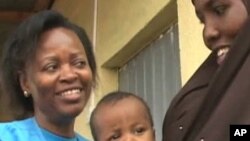The prolonged drought in Kenya is affecting millions of people. More than three million people are in need of immediate food aid.
The United Nations Children’s Fund (UNICEF) says the number of those starving continues to climb daily.
UNICEF says Kenya has experienced three failed rainy seasons. People are not able to recover from one drought cycle before the next comes. As a result, they’re losing their livelihoods as their livestock continue to die.
In one of the pastoralist areas in the north, some communities are no longer keeping cows but instead have goats and other small roaming animals because they need less fodder, said Olivia Yambi, UNICEF representative for Nairobi.
“But also, people are becoming dependent on food distribution. The government has kicked in a food distribution response, but, there are a lot of partners, including the Kenya Red Cross Society,” she said.
The effects of starvation are felt by everyone, but those most vulnerable are young children. In many cases the scars of malnutrition are long lasting, leading to other health problems.
Yambi said providing a general blanket of food distribution to children under the age of five is meant to prevent severe malnutrition.
“In those instances where children are already severely malnourished, therapeutic food products are provided, as well as medical intervention, and children do recover,” said Yambi.
She said when parents delay getting help for malnourished children at the beginning stages, recovery time is longer.
Yambi said severely malnourished children are also at risk of psychological trauma and loss of development potential.









